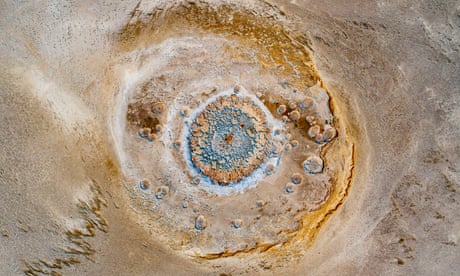- by foxnews
- 07 Mar 2025
‘Absolutely amazing’: Lake Eyre dances with colour thanks to big La Niña rains
‘Absolutely amazing’: Lake Eyre dances with colour thanks to big La Niña rains
- by theguardian
- 02 Apr 2022
- in news

Kati Thanda-Lake Eyre is about 700km north of Adelaide, covers more than 9,000 sq km - an area roughly equivalent to greater suburban Melbourne - and is the lowest point on the Australian mainland.
When the tropical monsoon hits, floodwaters flow from major rivers in the channel country of outback Queensland. That last happened on a large scale in 2019, when the area was inundated for the first time in decades.
This year the Queensland waterways have not contributed as much to filling the lake, at least to this point, though some water is still flowing down from the Diamantina River. Instead, the lake itself was hit with a dump of local rain in January more than twice the long-term average, and water has flown in from the nearby Flinders Ranges.
It is not as wet as three years ago but, as seen from the air by photographer Doug Gimesy, the result is a spectacular dance of pinks, blues, greens and browns as the water replaces red dirt and the dry lake's white salt pan.
Prof Richard Kingsford, a conservation biologist at the University of New South Wales, has been studying the globally significant lake ecosystem for more than three decades and says there has not been rainfall like this over the lake since the 1980s.
To see the filling lake in person, he says, is breathtaking.
"It is absolutely amazing," Kingsford says. "I never tire of flying over it because every time you do it, it's different. Just the expanse of it. You get these amazing pink colours."
"When it's full it's like a mirror and you get this thing where you lose your horizon. I remember being with pilots saying they had to use their instruments [to fly] because it was the only way to navigate."
The ecosystem comes alive when there is enough fresh water to dilute the salt that rests on the dry lake floor. Then, tiny microscopic crustaceans hatch from egg cases at the bottom of the lake. That in turn brings saltwater fish and bird species - pelicans, pink-eared ducks, banded stilts and migratory waders such as the sharp-tailed sandpipers.
"I still remember counting birds there in the 1990s and there was 300,000 birds there of every species you could imagine. It was just like clouds of these birds flying up in front of us," Kingsford says.
The transformation of the landscape this year has been welcomed by traditional owners, ecologists, graziers and tourist operators, who fly sightseeing trips across the transforming country.
The Lake Eyre Basin is considered one of the planet's last remaining pristine desert river systems and is a contested space. Locals have campaigned to stop development harnessing and rediverting the flow of water. Two decades ago there was a push to expand cotton irrigation in south-western and central Queensland.
Now, the big development push is from energy companies eyeing the channel country's fossil fuel reserves. Gas is locked several kilometres down, with government reports suggesting it would need hydraulic fracturing to liberate it.
Kingsford says plans to build dams are also a risk to the basin's health. "There are always big threats," he says. "Thankfully, it's pretty much still a free-flowing river system."
- by foxnews
- descember 09, 2016
Virgin Mary sculpture standing nearly 200 feet set to be tallest religious statue in the world
A Virgin Mary statue is being built in Poland and it may be the world's tallest religious statue once construction is completed. The build will stand nearly 200 feet.
read more


